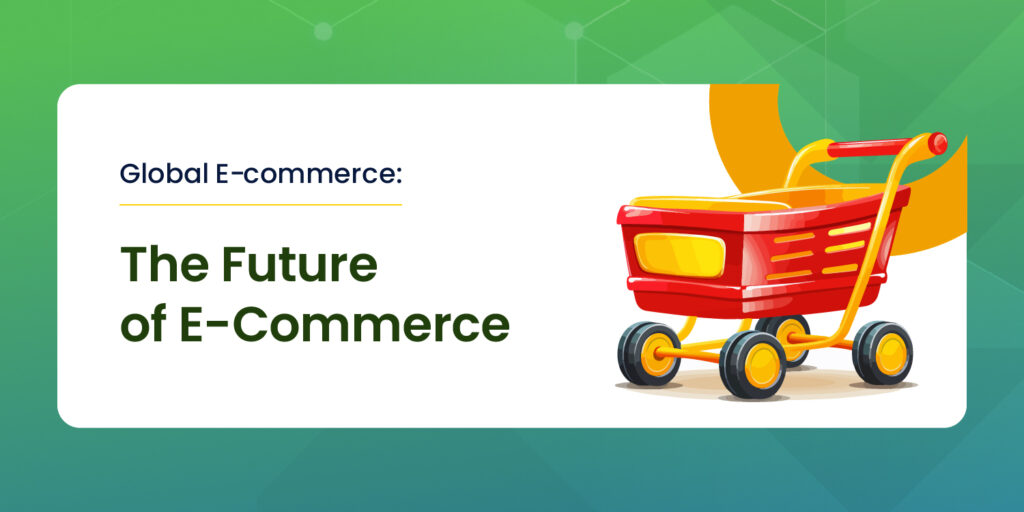As we step into 2024, the landscape of e-commerce continues to evolve at an unprecedented pace.
The convergence of technological advancements, changing consumer behaviors, and global market dynamics has set the stage for a transformative year in online retail.
Check out these numbers that will blow your mind away!
So, what are the key e-commerce trends that are poised to shape the industry in 2024? Let’s take a look
1. Augmented Reality (Ar) Shopping Experiences:
In 2024, e-commerce is no longer confined to the two-dimensional realm of screens. Augmented Reality or AR has taken the shopping experience to new heights, allowing consumers to virtually try products before making a purchase.
According to a report by Statista, the AR market in e-commerce is expected to reach $10.7 billion by the end of 2024.
Remember Princess Diaries 2: The Royal Engagement? Queen Clarisse Renaldi unveils Princess Mia’s new suite in Genovia, featuring a lavish walk-in closet equipped with remotely controlled drawers. The movie is often cited for its elaborate portrayal of the coveted “dream walk-in closet.”
AR is not just a gimmick; it’s a game-changer in the e-commerce space, providing customers with a more immersive and personalized shopping experience.
For instance. IKEA Place app allows users to virtually place furniture in their homes before buying, resulting in a 32% increase in online furniture sales.
2. Voice Commerce On The Rise:
Voice-activated shopping is gaining momentum, driven by the proliferation of smart speakers and virtual assistants. According to a study by Juniper Research, voice commerce transactions are projected to reach $80 billion by 2024.
The rising popularity of voice search is directly impacting search results and influencing shopping decisions. People in the Ecommerce business need to stay aware of these shifts in search behavior to optimize their platforms for future sales. At the very least, it’s crucial to ensure that your ecommerce website is geared towards mobile voice search optimization. This involves prioritizing information that users typically inquire about, including your website and physical address, contact number, and business hours.
Case in point: Amazon’s Echo users are 2.5 times more likely to make a purchase using voice commands, demonstrating the growing acceptance of voice commerce.
3. Personalized Customer Journeys With AI:
Artificial Intelligence (AI) is playing a pivotal role in shaping personalized customer journeys. Machine learning algorithms analyze vast amounts of data to understand individual preferences and behaviors, resulting in tailored product recommendations.
Do you know, according to Gartner, by 2024, 45% of e-commerce websites are expected to utilize AI for personalized shopping experiences?
Case Study: Spotify’s personalized playlists have increased user engagement by 30%, showcasing the impact of AI-driven personalization in the digital realm.
Although only a handful of retailers possess the extensive data required for genuine AI applications, certain Enterprise Resource Planning (ERP) and Customer Relationship Management (CRM) systems integrate machine learning features to facilitate cross-selling and upselling efforts.
4. Sustainable E-Commerce Practices:
This one’s a biggie!
Consumers are increasingly prioritizing sustainability, and e-commerce is no exception. Brands that embrace eco-friendly practices and transparent supply chains are gaining a competitive edge. A Nielsen study reveals that 73% of consumers are willing to pay more for sustainable goods.
Patagonia’s commitment to sustainability has led to a 15% increase in online sales, proving that environmentally conscious practices can drive both profits and positive impact.
Sustainability is not just a trend; it’s a business imperative.
Sustainability has transitioned from being a niche concern to a mainstream consideration for consumers. E-commerce brands need to align with environmental values to win the trust and loyalty of conscious consumers. This involves implementing eco-friendly packaging, minimizing carbon emissions in shipping processes, and providing products that are sourced and produced with ethical considerations.
Consumers are increasingly drawn to e-commerce brands that mirror their values, making sustainability a significant distinguishing factor. Brands showcasing a dedication to environmental and social responsibility will not only attract a larger customer base but also play a pivotal role in fostering a greener future.
5. Integration With Social Media
The integration of social commerce is evolving rapidly, with social media platforms transforming into significant players in the e-commerce landscape. In the upcoming year, this integration is expected to become even more seamless.
Platforms such as Instagram and Facebook, which already redirect users to a store’s website, will enhance their shopping features, enabling users to seamlessly browse and purchase products without leaving the app.
This trend is progressively erasing the boundaries between social media and e-commerce, facilitating businesses in reaching their target audience more effectively. Simultaneously, consumers will find it easier to discover and purchase products directly from their social media feeds.
6. Better Distribution And Fulfillment Planning
The demand for swift order fulfillment is pushing businesses to enhance their distribution and fulfillment planning. Customers now expect their purchases to be delivered promptly, and any delays in delivery estimates can lead them to explore alternative options.
The implementation of multilayer distribution models, hyperoptimized supply chains, and the integration of software-assisted fulfillment processes is already driving significant transformations and generating substantial profits.
This trend is expected to persist well into the foreseeable future, as businesses continue to prioritize and optimize their distribution and fulfillment strategies to meet the growing expectations for speedy and efficient delivery.
7. Integration With Cryptocurrency
Cryptocurrency and blockchain integration are gaining traction, with the potential for increased prominence in e-commerce throughout 2024. Several online retailers have already embraced cryptocurrencies such as Bitcoin and Ethereum as accepted forms of payment.
The decentralized and secure features of blockchain technology offer advantages, particularly in terms of transparency and fraud prevention.
As the acceptance of cryptocurrencies continues to expand, e-commerce businesses will find it essential to adapt their payment processing systems to incorporate these digital currencies. This adaptation caters to tech-savvy consumers who prefer the convenience and security provided by cryptocurrency as a method of payment.
In Conclusion
As we look ahead to the e-commerce landscape of 2024, it’s clear that innovation and adaptability will be the keys to success.
Augmented Reality, voice commerce, AI-driven personalization, and sustainability are not merely trends but integral components of the evolving e-commerce ecosystem. Businesses that embrace these trends and leverage cutting-edge technologies will undoubtedly thrive in the competitive digital marketplace.
As statistics and case studies indicate, the future of e-commerce is dynamic, customer-centric, and sustainable.

What We Do
Company
Resources
Careline:+1 (917) 5957762
© 2025 Assiduus Global INC. All Rights Reserved.



